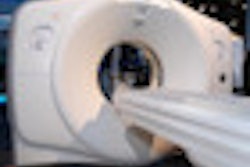In an effort to produce a finer level of dose modulation, the group developed a digital beam attenuation (DBA) system that allows modulation of x-ray dose within the fan angle, explained medical physicist Timothy Szczykutowicz.
"Our system allows for dose distributions to be tailored in a never before available level of control, which keeps the dose down while in many cases simultaneously improving image quality," he said.
The technology can also be used for volume-of-interest (VOI) imaging, in which only a small volume of the patient is fully irradiated, while the rest of the patient receives a much smaller dose, he said.
The researchers explored the relationship between the imaging system and the DBA dimensions and used the data to calculate the minimum amount of DBA material that must be present in the x-ray beam. The result is the thickness needed to determine the amount of tube loading, which is calculated as the ratio of the detector signal without the DBA to the detector signal with the DBA.
The study team made this calculation for 92 elements, applying various amounts of soft-tissue compensation. They then compared doses and noise uniformity between DBA and no DBA.
Highly and weakly attenuating elements were not practical, but elements between scandium and selenium allowed for realistic soft-tissue compensation amounts without excessive tube loading. Specifically, the use of iron led to a dose reduction factor of 6.6, 2.4 times higher noise uniformity, five times lower scatter to primary ratio, and a more uniform dose distribution compared with not using a DBA, the group reported.
The implications of this work, if successfully translated to clinical use, would be "lower doses, less noise-induced streaking artifacts, and the possibility of new and improved imaging acquisition techniques like VOI and photon-counting imaging," according to Szczykutowicz.



















